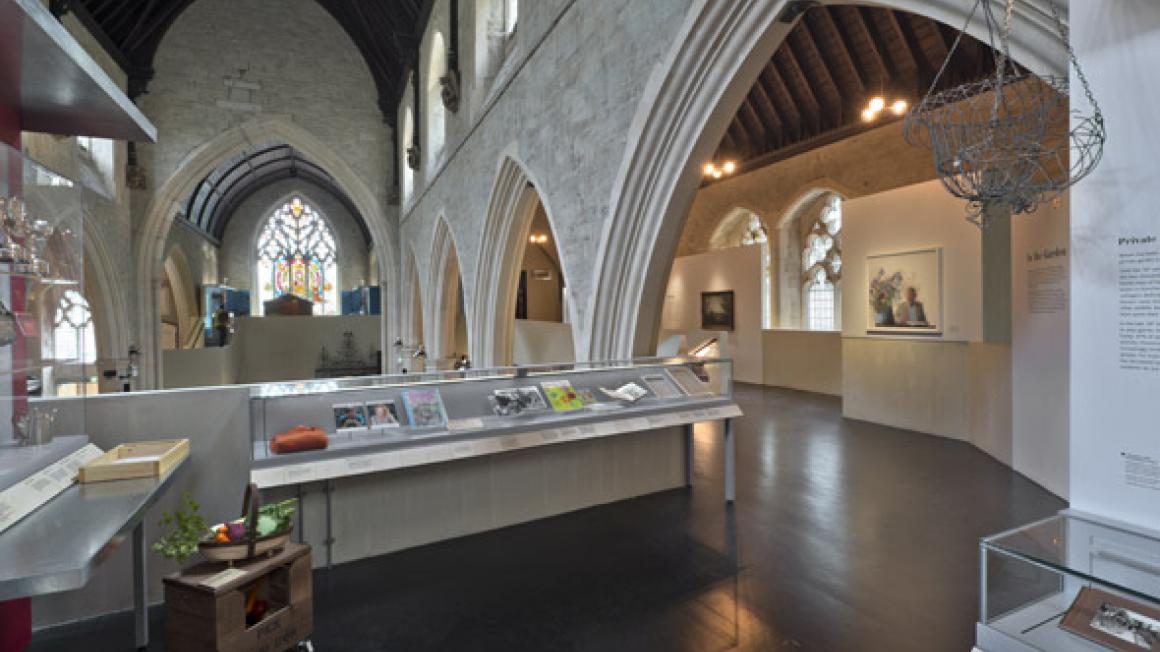The Garden Museum
 this is the museum for you. It’s notoriously difficult to create a museum about a pastime, even one as central to our national consciousness as horticulture, not least in the vast nave and garden of a disused – but wonderfully located – church next to Lambeth Palace, but that’s exactly what was done nearly 40 years ago, giving us the Museum of Garden History.
this is the museum for you. It’s notoriously difficult to create a museum about a pastime, even one as central to our national consciousness as horticulture, not least in the vast nave and garden of a disused – but wonderfully located – church next to Lambeth Palace, but that’s exactly what was done nearly 40 years ago, giving us the Museum of Garden History. This has now been brilliantly recreated with seven purpose-built galleries, 1,200 objects on display, a garden design archive, classrooms (built inside a stylish modernist glass and bronze cloister), a restaurant and two striking small gardens designed by Dan Pearson and Christopher Bradley-Hole – both multi gold medal-winners at Chelsea. And if that’s not story enough, hidden away beneath you are the lead coffins of five Archbishops of Canterbury, recently discovered in a secret underground crypt.
Alan Titchmarsh rightly describes this place as ‘the spiritual home of gardening’. It’s both Britain’s oldest and its newest great museum. Buried here are Stuart Britain’s most famous plant hunters, father and son John Tradescant. And Captain Bligh – yes, of the mutiny, but he also introduced highly nutritious breadfruit to the colonial Caribbean.
As well as remarkable plants from abroad, the Tradescants acquired a cabinet of curiosities – ‘The Ark’ which was inherited by Elias Ashmole and became the core collection for the Ashmolean in Oxford. Some of these artefacts are back in Lambeth, along with the vegetable lamb, an ancient root which looks just like a baby herbivore.
This is a three-dimensional history of British gardening from 1600 till now and it’s very much a museum for everyone. Kids go free and in an inner city where twothirds of people don’t have easy access to a garden, the museum has links with about 100 schools and excellent facilities for teaching and connecting with young people, many of whom have never held a worm or looked closely at a plant.
There are so many amazing artefacts: Britain’s oldest wateringcan; mid-nineteenth century lawnmowers; a cucumber forcer, which looks like a huge test tube; a Humphry Repton Red Book; Gertrude Jekyll’s personal album of her early photographs – the only one this side of the Atlantic; hand-drawn early designs for famous gardens, such as Geoffrey Jellicoe’s Shute or Dominic Cole’s Eden Project; and an inspiring Edwardian portrait of an anonymous black gardener.
There are also sections on wartime gardening (including flower pressings from a bombsite in the City of London), allotments, public parks and garden broadcasting, plus two excellent temporary exhibitions – newly commissioned paintings of London landscapes and specimens from historic orchards.
You’ll also find fascinating films in which leading designers explain their craft, or in which ordinary folk talk about their sheds. I must declare an interest here – I’m in one of the films and when I helped run the Heritage Lottery Fund, this was a project we supported, part of a successful £7 million-plus of fundraising by this small independent charity. It has more than lived up to my expectations and I believe it will fulfil yours. The new Garden Museum is a fabulous addition to London’s heritage and horticultural landscape.
The Garden Museum, Lambeth Palace Road, London SE1: 020-7401 8865, www.gardenmuseum.org.uk


